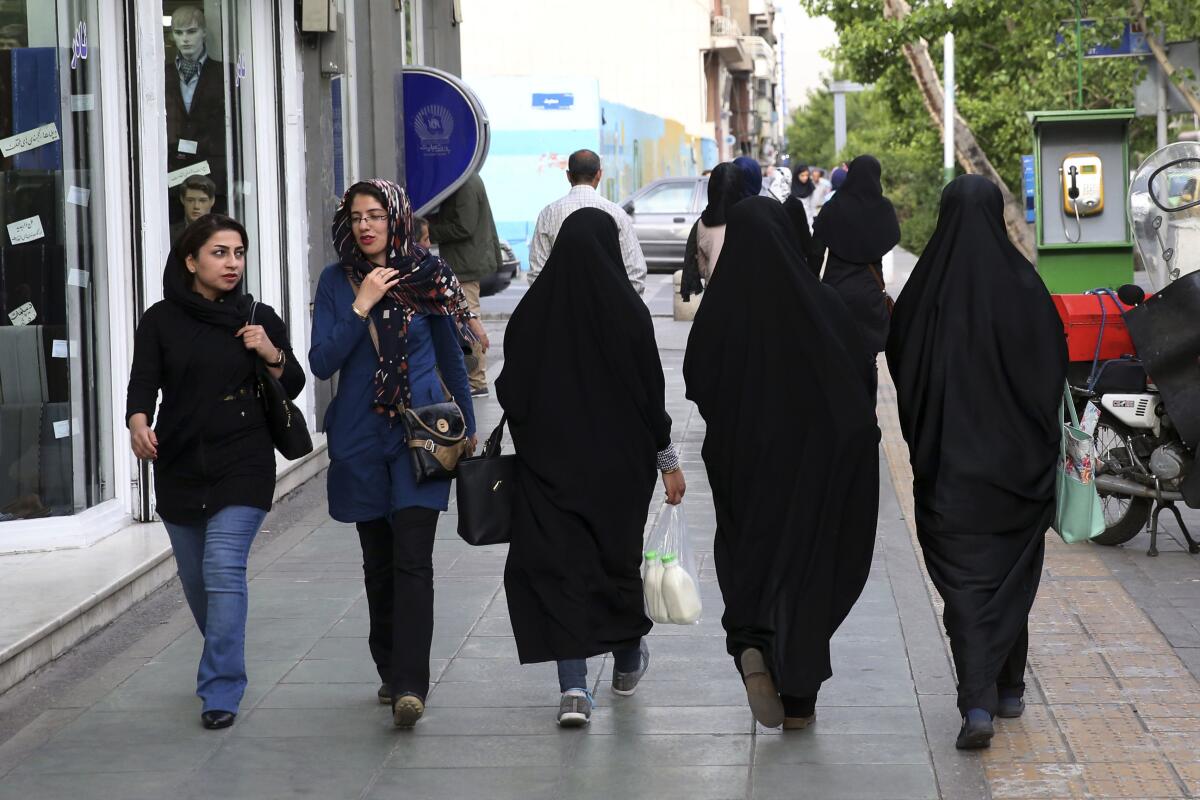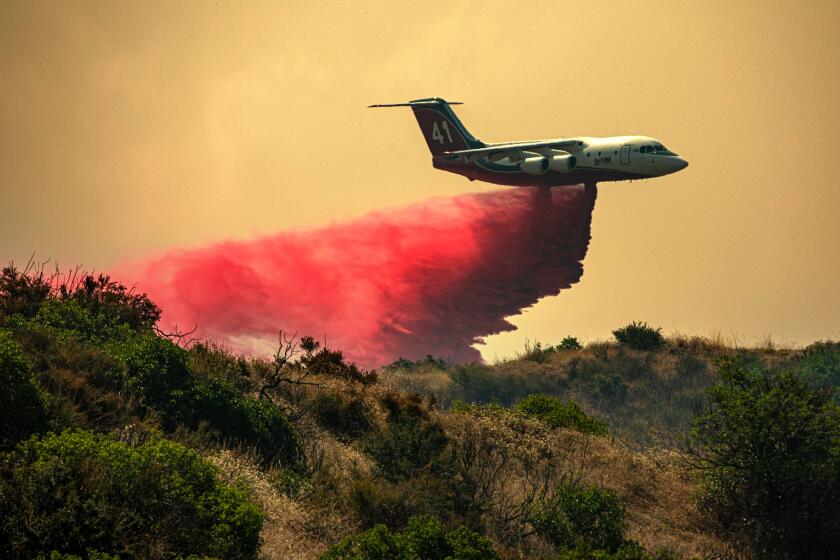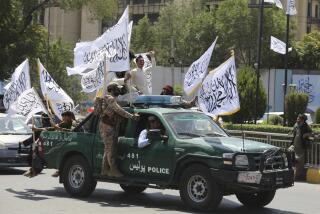Iran’s morality police return after protests in a new campaign to impose Islamic dress on women

- Share via
DUBAI — Iranian authorities on Sunday announced a new campaign to force women to wear the Islamic headscarf and morality police returned to the streets 10 months after the death of a woman in their custody sparked nationwide protests.
The morality police had largely pulled back following the death of 22-year-old Mahsa Amini in September, as authorities struggled to contain mass protests calling for the overthrow of the theocracy that has ruled Iran for more than four decades.
The protests largely died down earlier this year following a heavy crackdown in which more than 500 protesters were killed and nearly 20,000 detained. But many women continued to flout the official dress code, especially in the capital, Tehran, and other cities.
The morality police were only rarely seen patrolling the streets, and in December, there were even some reports — later denied — that they had been disbanded.
Multiple blazes were burning in Riverside County on Friday afternoon, prompting evacuations in Moreno Valley from the Reche fire and in Beaumont from the Highland fire.
Authorities insisted throughout the crisis that the rules had not changed. Iran’s clerical rulers view the hijab as a key pillar of the Islamic revolution that brought them to power, and consider more casual dress a sign of Western decadence.
On Sunday, Gen. Saeed Montazerolmahdi, a police spokesman, said the morality police would resume notifying and then detaining women not wearing a hijab in public. In Tehran, the men and women of the morality police could be seen patrolling the streets in marked vans.
Late Saturday, police arrested Mohammed Sadeghi, a young and relatively unknown actor, in a raid on his home that he appears to have broadcast on social media. Earlier, he had posted a video in response to another online video showing a woman being detained by the morality police. “Believe me, if I see such a scene, I might commit murder,” he said.
The website of the semiofficial Hamshahri daily, which is affiliated with the Tehran municipality, said he was arrested for encouraging people to use weapons against the police.
The battle over the hijab became a powerful rallying cry last fall, with women playing a leading role in the protests. The demonstrations quickly escalated into calls for the overthrow of Iran’s clerical rulers, whom the mostly young protesters accuse of being corrupt, repressive and out of touch. Iran’s government blamed the protests on a foreign conspiracy, without providing evidence.
Several Iranian celebrities joined the protests, including prominent directors and actors from the country’s celebrated film industry. Several Iranian actresses were detained after appearing in public without a hijab or expressing support for the protests.
In a recent case, actress Azadeh Samadi was barred from social media and ordered by a court to seek psychological treatment for “antisocial personality disorder” after appearing at a funeral two months ago wearing a cap on her head.
More to Read
Sign up for Essential California
The most important California stories and recommendations in your inbox every morning.
You may occasionally receive promotional content from the Los Angeles Times.











